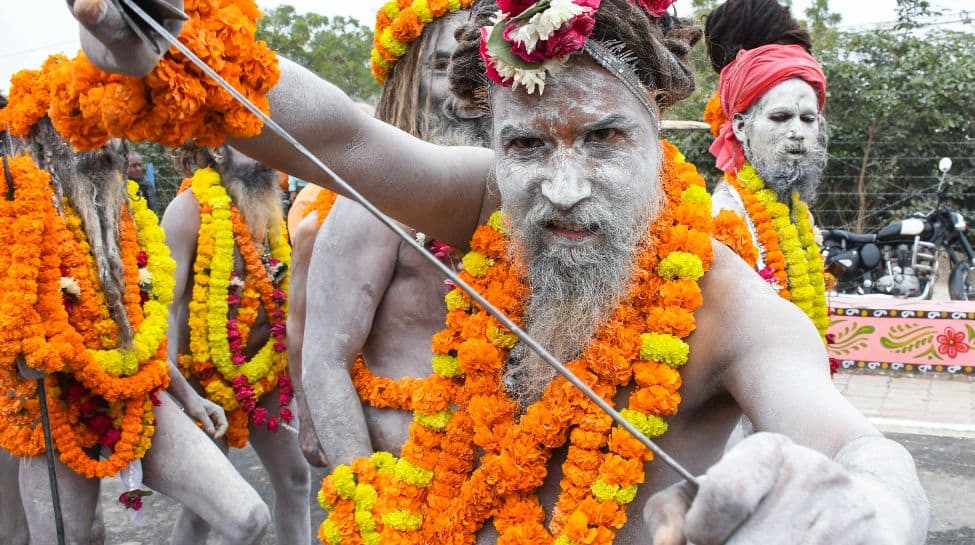The Maha Kumbh Mela is one of the largest and most important religious events in the world, held every 12 years at four holy places in India: Allahabad (Prayagraj), Haridwar, Nashik and Ujjain. Known for its spiritual significance and huge scale, the Kumbh Mela attracts millions of devotees from all over the world. While most people are aware of its importance as a religious event, there are many lesser known facts that make this grand event even more interesting. Here are 10 secrets about the Maha Kumbh Mela that you might not know:
1. Divine Relationship:
Kumbh Mela is associated with an astronomical event. According to Hindu mythology, the Kumbh Mela coincides with the movement of the planets, and the timing is based on the alignment of the Sun, Moon and Jupiter. It is believed that this alignment creates a powerful spiritual energy, making the sacred rivers at the fair more sacred to the pilgrims who bathe in them.
2. Origin of the name ‘Kumbh’:
The word “Kumbh” means “vessel” or “pitcher” in Sanskrit. It is believed that the Kumbh Mela commemorates the mythological event of Samudra Manthan (churning of the ocean) when the elixir (nectar) of immortality was discovered. It is said that a drop of this divine nectar fell into the rivers at the four places where the fair is held, giving these places immense spiritual significance.
3. Unique role of Naga Sadhus:
Naga Sadhus have a special place among the millions of devotees who come to the Kumbh Mela. These ascetics, who renounce worldly pleasures and possessions, are known for their distinctive appearance – often naked and smeared with ashes. Naga Sadhus are believed to possess extraordinary spiritual powers and play an important role in the rituals and processions during the fair.
4. 12 Year Cycle:
Maha Kumbh Mela is held oncevery 12 years At each of the four locations, the event rotates between them. This long period is based on the belief that every 12 years there is a cosmic cycle, a period in which the influence of the gods and celestial bodies reaches its peak. Thus the Kumbh Mela becomes an opportunity for devotees to purify themselves and attain moksha (liberation from the cycle of life and death).
5. Magic power of Ganga:
The Ganges River is central to the Kumbh Mela, especially in Prayagraj (Allahabad), where the confluence of the Ganges, Yamuna and the mythical Saraswati is considered a place of great power. Devotees believe that taking a dip in the Ganga during Kumbh will wash away all sins and provide spiritual liberation. The water of this sacred river is believed to have curative powers and is often taken home by pilgrims.
6. World’s largest gathering:
Kumbh Mela is not only a religious event but also a logistical marvel. At its peak, the event attracted over 120 million people during the gathering, making it the largest religious or spiritual gathering on Earth. The sheer scale of the event requires careful planning and organisation, with temporary cities set up to accommodate large numbers of people.
7. Rituals beyond bathing:
While the most famous ritual at the Kumbh Mela is the sacred bath in sacred rivers, the event also includes a range of spiritual practices such as yagya (fire ritual), prayers and religious discourses. Devotees engage in meditation and chanting with a focus on spiritual growth and purification. The fair also serves as a platform for spiritual leaders to address their followers on various religious topics.
8. Importance of Akharas:
Akharas are religious orders of ascetics and each Akhara plays an essential role in the Kumbh Mela. Akharas organize processions, rituals and lead the public to bathe in sacred rivers. There are different types of akharas, each following unique traditions and practices, and they often compete for dominance in the spiritual realm. Naga Sadhus, in particular, belong to certain Akharas and are known for their fierce devotion.
9. The Secret of the Aquarius Symbol:
The symbolism of the Aquarius (pitcher) is deep. Apart from representing the elixir of immortality, it is also seen as a representation of the universe and the human body. During the fair, Kumbh is seen as the divine container holding the nectar of knowledge and spiritual enlightenment. It represents the journey of self-discovery and awakening that devotees aim for during their participation in the event.
10. Place of Integration:
The Kumbh Mela is not only a place of religious purification but also a place of unification. People from different regions, cultures and social backgrounds come together, setting aside differences to participate in a common spiritual goal. The fair serves as a bridge between the diverse spiritual traditions of India, bringing together a unique blend of sects, practices and beliefs that reflect the religious pluralism of India.
The Maha Kumbh Mela is more than just a religious gathering; It is a spiritual phenomenon that mesmerizes the hearts and minds of millions of people. Its roots in ancient mythology, its divine significance and its role in individual and collective transformation make it a phenomenon unlike any other. Whether you are attracted by its spiritual allure or its cultural grandeur, the Kumbh Mela remains a captivating and profound expression of faith, unity and the search for ultimate liberation.
(This article is for your general information only. Zee News does not confirm its accuracy or reliability.)
